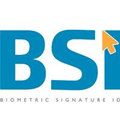Identity Theft Is Easy Over P2P
Robert Siciliano Identity Theft Expert
Peer to peer file sharing is a great technology used to share data over peer networks. It’s also great software to get hacked and have your identity stolen.
Installing P2P software allows anyone, including criminal hackers, to access your data. This can result in data breaches, credit card fraud and identity theft. This is the easiest and, frankly, the most fun kind of hacking. I’ve seen numerous reports of government agencies, drug companies, mortgage brokers and others discovering P2P software on their networks after personal data was leaked.
The Register reports that a Washington state man has been sentenced to more than three years in federal prison after admitting to using file-sharing program LimeWire to steal tax returns and other sensitive documents. He searched LimeWire users’ hard drives for files containing words such as “statement,” “account,” and “tax.pdf.” He would then download tax returns, bank statements, and other sensitive documents and use them to steal identities.
I did a story with a Fox News reporter and a local family who had four kids, including a 15-year-old with an iPod full of music, but no money. I asked her dad where she got all her music and he replied, “I have no idea.” He had no idea that his daughter had installed P2P software on the family computer and was sharing all their data with the world. The reporter asked me how much personal information I could find on the P2P network in five minutes. I responded, “Let’s do it in one minute.”
There are millions of PCs loaded with P2P software, and parents are usually clueless about the exposure of their data. P2P offers a path of least resistance into a person’s computer, so be smart and make sure you aren’t opening a door to identity thieves.
- Don’t install P2P software on your computer.
- If you aren’t sure whether a family member or employee has installed P2P software, check to see whether anything unfamiliar has been installed. A look at your “All Programs Menu” will show nearly every program on your computer. If you find an unfamiliar program, do an online search to see what it is you’ve found.
- Set administrative privileges to prevent the installation of new software without your knowledge.
- If you must use P2P software, be sure that you don’t share your hard drive’s data. When you install and configure the software, don’t let the P2P program select data for you.
- Get a credit freeze. Go to ConsumersUnion.org and follow the steps for your particular state. This is an absolutely necessary tool to secure your credit. In most cases, it prevents new accounts from being opened in your name.
- And invest in Intelius identity theft protection. Not all forms of identity theft protection can be prevented, but identity theft protection services can dramatically reduce your risk.
Robert Siciliano, identity theft speaker, discusses P2P hacks on Fox.

























